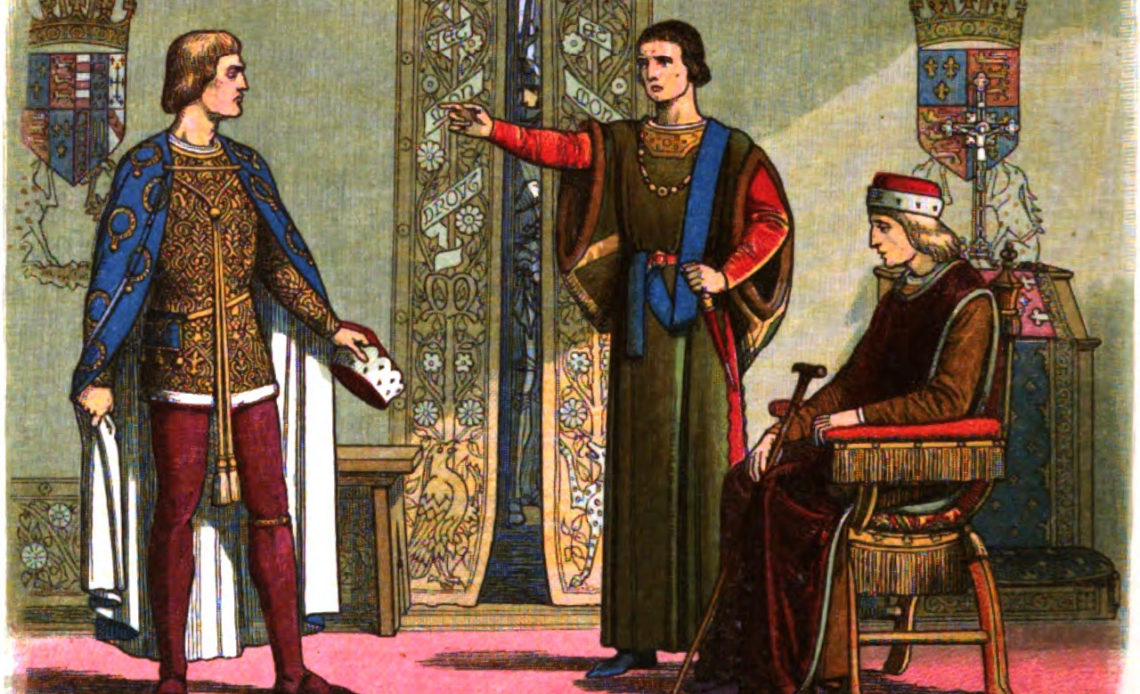
Nine royal houses have ruled England since the Norman Conquest in 1066 and all of them have made their mark. But eight have seen their power pass elsewhere and this summer Royal Central is looking at what happened to those that have now faded into history. The latest installment plunges us into the heart of the power struggles swirling around the English crown in the 14th and 15th centuries as we ask, what happened to the House of Lancaster?
The House of Lancaster
The Lancastrians came to the throne with swords in their hands and they departed in exactly the same manner.
Henry IV, known as Bolingbroke, had snatched the crown from his unpopular cousin, Richard II, in a coup in 1399. He faced his own share of rebellions and revolts but was successful in strengthening his power while his political prowess allowed him to restore a measure of stability to England.
His son, Henry V, benefitted from his father’s administrative strength and he built on that while maintaining an active foreign policy as he pursued power and military glory in France. The great soldier king was one of the most celebrated princes of his time but his early death, in 1422, proved disastrous for his dynasty.
The House of Lancaster was inherited by his nine month old son, Henry VI, who would also be crowned in his youth as King of France, the only English monarch to hold both titles. Henry was shy and anxious from his earliest years and suffered serious mental health issues which were overlooked. His ineffectual rule would eventually lead to fatal challenges to the House of Lancaster.
The Last King
By 1452, Henry was suffering such severe health problems that he could neither move nor speak. By the time he was well again, in 1454, the House of York had begun to challenge for control of the government and power was fragmenting as different factions at court sought ascendancy.
The Battle of St. Albans in 1455 marked the first major fight of what became known as the Wars of the Roses. Henry’s rival, Richard, Duke of York, and his family’s white rose was now at loggerheads with the Lancastrian red rose for control of England.
The Last Queen
Henry VI’s wife, Margaret of Anjou, was determined to hold on to power and proved to be a far more able politician and military commander than her husband. She won a famous victory when her commanders beat the Yorkists at the Battle of Wakefield leading to the execution of her former friend and now great rival, Richard of York. Even when Henry was deposed by Richard’s son, Edward IV, in 1461, Margaret continued to fight. A brief resurgence of the Lancastrian cause in 1470 led to Henry being reinstalled as king and Margaret led his troops into battle at Tewskesbury in 1471. It would be her last act as queen consort.
The Fall
The House of York claimed a decisive victory at Tewkesbury and Margaret and Henry VI’s only son, Edward, was killed, effectively ending the dynasty’s claim to power.
Henry was captured and died in mysterious circumstances in the Tower of London soon afterwards, most probably murdered either by or on the orders of Edward IV who quickly re-established his rule.
Henry’s death brought an end to the Lancastrian dynasty but its right to the crown would be claimed by others.

